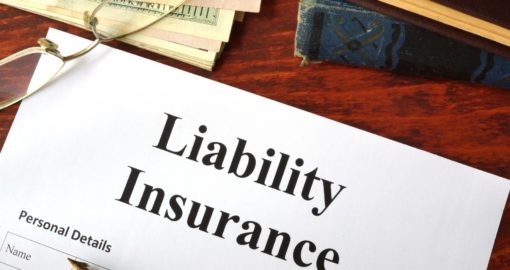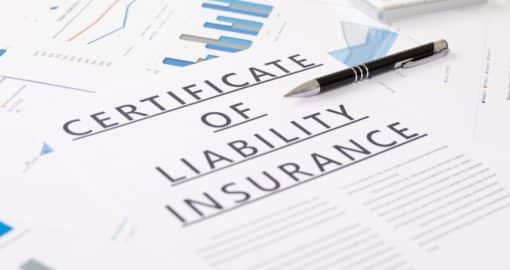Call Us Today (877) 943-0100
Why a Certificate of Insurance is Integral to Contractor Compliance
COI Management | July 7, 2021
When you proactively collect a certificate of insurance (COI) for your contractor and vendors, you are taking a big step towards contractor compliance and transferring your financial risk.
Contractor networks introduce more risk compared to an employee because you have less control over their work and any accompanying processes and procedures to ensure safety and quality work. Because of this, you should be prepared and anticipate losses associated with property damage or bodily injury during or after the work is complete.
If your contractor does not have the resources or proper insurance coverage, then your organization is on the line for the cost of the damage and injury caused by their negligence, which means you took on all the risk. This is why contractor compliance is so critical to your operations.
By collecting a COI, you will be ahead of the game when it comes to risk transfer and contractor compliance by ensuring that your contractor has the proper insurance coverage for potential negligence. To understand why, let us look at what risk transfer is and how to take advantage of using a contract and collecting your contractor’s insurance information to confirm compliance.
Risk Transfer & Contractor Compliance
Risk management is the identification of potential risks in advance and taking preventative steps to both decrease and limit the impact to your organization before they occur. With all organizations, resources and budgets are finite. As such, no organization will be able to attain what may be considered perfect compliance, so the objective or goal is to reduce the operational risk of non-compliance to levels that your organization feels are acceptable. This is quite often referred to as managing the risk of non-compliance.
With a contractor network, one of the simplest ways to manage and reduce this risk is through risk transfer, where you shift the risk from your organization and require the contractor to bear the risk. After all, this makes sense. If they are providing the work or product and it causes damage or harm, they should be responsible. Two of the most common and effective ways to shift risk is:
- A Signed Contract
- COI Collection & Tracking
A Signed Contract
The contract signed between you and your contractor is the best line of defense for financial risk transfer. When push comes to shove the courts will always refer to the contract that is in place to establish the relationship and any agreements. Using your legal team or an attorney, you will want to create or verify that you have a well written contract or agreement that includes an indemnification clause for any losses arising out of the contract and any work or warranty periods are defined.
An indemnification clause may further ensure that the risk is transferred to the contractor, but it does not guarantee that they have the financial wellbeing or funds to pay for any losses that may occur. Because of this, you will also want to require in the contract that the contractor carry insurance coverage with limits that are sufficient to cover losses for common risks associated with the work or product being supplied. Using a risk management professional is recommended to determine what would be comprehensive in coverage while helping you determine your appropriate risk and compliance threshold. Regardless of your insurance requirements, there are some key endorsements or changes to the insurance policies that should be required in the contract to maximize the risk transfer such as:
- Additional insured is an endorsement that lists another organization or person as insured, who otherwise would not be. This endorsement is used together with the indemnification agreement. If the indemnification clause does not hold up for one reason or another, then coverage may still be obtained as an additional insured. While all insurance requirements are important, this is by far the most important endorsement you can ask for.
- Primary and non-contributory is an endorsement that requires the contractor’s insurance be the first (primary) on the line, second to your organizations’, when there is a claim where both parties are at fault. The contractor and their insurance carrier cannot later seek losses separately from you as an additional insured (non-contributory).
- Waiver of subrogation is an endorsement that prevents the contractor’s insurance carrier from suing your organization for losses paid to the contractor where you have been found at fault.
Having a robust contract in place and requiring that your contractors carry appropriate insurance coverage with additional endorsements that back up the indemnification clause is only the first step. You must confirm the insurance coverage to further reduce the risk of non-compliance and be assured that there is a means to cover potential losses.
COI Collection & Tracking
If you require that your contractor carry proper insurance in the contract, then why go through the trouble of collecting COIs and attempt to verify that the coverage is in place? It is in the contract, so they will fulfill their obligation, right? Over the years, I have talked to organizations who rely on good faith or collect an initial, one-time COI and assume that the contractor will have coverage or that a major event will not happen on their watch. Unfortunately, having this perspective is like stating that you are okay with your organization not having insurance. Is that a risk that you would be willing to take?
There are now many options to assist with the COI collection and tracking process, and the benefits now outweigh the costs. Third-party vendors have automated systems, compliance reporting and expertise that simplify the process for your organization making it difficult to say that the risk is not worth collecting the COI.
Regardless, not having a COI on hand can negatively impact your ability to transfer financial risk. This is becoming more important as we continue to see an increase in litigation. Below are a few ways that collecting a COI to ensure contractor compliance can help your organization reduce and transfer financial risk.
Expectation and Accountability: When you set the expectation with your contractors that a COI is needed and renewal COI’s will be collected prior to work issued, then it also becomes a priority for them. This will naturally help some contractors to be better about paying their renewal premiums on time to ensure consistent coverage as well as provide you the insurance information in a timely manner to reference, if needed.
Visibility to Uninsured & Underinsured Contractors: Not every business purchases insurance or they may have coverage that does not properly cover you or them. By collecting a COI, you can make an educated decision on whether you choose to work with a contractor who has little to no insurance coverage. Because the COI provides basic information such as limits and additional insured, you can do a quick check that everything is in order.
Depending on the amount of risk tolerance and history of accidents and claims for your organization and industry, you may need to collect additional forms such as additional insured endorsements to ensure this coverage is part of the policy versus solely relying on the COI.
Make the Claims Process Easier: Many times, especially with small accidents, the contractor will pay for any losses, especially if you have a good working relationship with them. However, if the contractor refuses to pay or it is a significant accident with a high value loss, you can go straight to the insurance carrier to file a claim if you are an additional insured. Having the COI on file will allow you to look up which carrier to contact. Without this information, you are reliant on the contractor to provide, which may be difficult and stressful to obtain after an accident.
Summary
When it comes to contractor compliance, the collection of your contractor COI’s is not only critical but an effective way to optimize financial risk transfer. If you have a signed contract with an indemnification agreement, it does not guarantee that a contractor has the means to pay for an accident and any associated losses. Requiring insurance and collecting a COI is a useful way to set the expectation and to ensure you do not have uninsured or underinsured contractors working or providing products on your behalf. This is especially critical if you provide them with consistent or high-risk work. If there is an accident, you will not only be better positioned to recoup losses but can also show due diligence in protecting your organization by managing the risk of non-compliance.
Contents are provided for information purposes only and should not be construed as legal advice. Users are reminded to seek legal counsel with respect to their obligations and use of PlusOne Solutions services.
About PlusOne Solutions
PlusOne Solutions has been an industry leader in the risk management field by specializing in compliance programs that meet the complex challenges of geographically dispersed contractors, vendors, and employee networks. PlusOne Solutions protects companies from possible financial, legal, and reputational risks associated with contractor and vendor relationships while creating safer work environments. To learn more about our contractor compliance solutions, fill out our online contact form today.
To receive these updates directly in your email inbox, sign up for the newsletter. Questions or comments? We want to hear from you.6 Benefits of Outsourcing Your Certificate of Insurance Management Program
You already know managing Certificates of Insurance (COI) is a crucial part...
Read MoreUnderstanding COIs – Certificate Holder vs. Additional Insured
Financial risk arising from unplanned accidents is a common occurrence in the...
Read More11 Ways to Improve Service Network COI Management
Protecting your organization when working with third-party contractors can be complicated. There...
Read More




